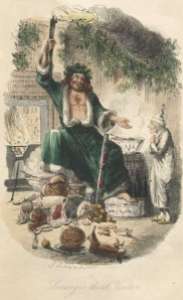Trotzkinder: defying obstacles
Picture a toddler in the middle of the Terrible Twos: you tell them specifically not to do something, they either do it immediately or spend the next few hours determinedly trying to find a way around whatever obstacle or hindrance you’ve put in their way to prevent them from carrying out the forbidden task. The Germans have a word for it: ‘Trotzkind’, literally, ‘a defiance child’, with all the connotations of defiance for defiance’s sake. And what Trotzkinder and Terrible Twos toddlers have that your characters need is that overwhelming sense of purpose and desire to achieve a set objective, trotzt or despite the odds.
Competing objectives: introducing conflict
Last week, I introduced the idea of actors using objectives to analyse plays for performance. How does this actually work? Well, let’s start simple: take an empty stage with a chair on it. Character A enters. Her objective is to sit on a chair. There is only one chair, so she sits. So far so good: not particularly dramatic, but at least the action is clear and the audience is now focused on the character and the chair and is waiting for the next event.
Enter Character B. Her objective is also to sit on a chair. But wait—the chair is occupied—Character A is still sitting on it! Now the audience are watching with interest. How will Character B react? What will she do? What about Character A? How will she react? And the key question for the audience: what will happen next? Without any long character explanations or convoluted plot twists and frenetic action, we’ve already set up an intriguing dramatic scenario.
Of course, both characters don’t have to have the same objective, as long as some conflict of purpose between them remains. Character A’s objective may well be to be the only person seated on stage—so what does she do when Character B decides to achieve her objective by going off to find another chair?
Character choice: conflict and strategy
A character’s objective can change within a scene as they react to another characters’ actions.
For example, in the above scenario, Character A might decide that the only way of preventing Character B bringing on another chair is to block up the entrances to the stage. In that case, blocking up the entrances becomes her new unit objective (her new purpose), but the overall super-objective of being the only person seated on stage remains and dictates all her further actions and reactions.
This is the great thing about using objectives—they act as a vital point of reference to link all the action and dialogue for a character and prevent a scene, an act or, indeed, even a whole novel going merrily off on a tangent. Because if it threatens to go AWOL on you, just play the objective and bring it back. Remember the Trotzkind: what is my purpose? Why am I here and what am I trying to do?


